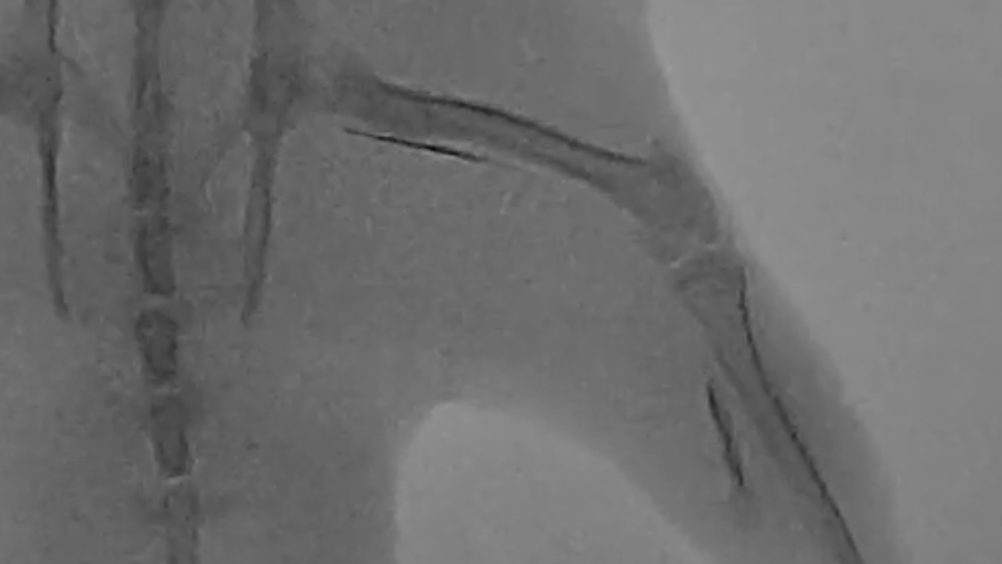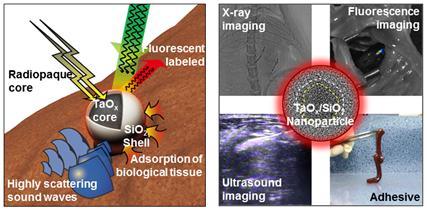Radiopaque glue can seal wounds and guide surgery
Researchers in Korea have developed a nanoparticle-based surgical glue that can be used in place of stitches to close wounds, and which is visible on a range of medical scans.


(Credit: IBS)
TSN, which has a shell made of silica (SiO2) and a core of radiopaque tantalum oxide (TaOx), has been created by scientists at Korea’s Centre for Nanoparticle Research, working alongside medical professionals from Seoul National University Hospital. SiO2 holds the tissue together, while TaOx provides contrast enhancement. According to the research team, the radiopaque adhesive shows up when using many common imaging techniques, such as fluoroscopy, ultrasound, and computed tomography (CT). Results from the teams surgical procedures on animal models are published in Nature Communications.
It’s a discovery that has the potential to help doctors carry out surgery more accurately, and could be particularly well suited to minimally invasive procedures such as bleeding embolisation, angioplasty, stent insertion, and biopsy. The researchers claim its properties were successfully tested in sealing a liver puncture and in conducting operations in moving organs, such as lungs and limbs.
Register now to continue reading
Thanks for visiting The Engineer. You’ve now reached your monthly limit of news stories. Register for free to unlock unlimited access to all of our news coverage, as well as premium content including opinion, in-depth features and special reports.
Benefits of registering
-
In-depth insights and coverage of key emerging trends
-
Unrestricted access to special reports throughout the year
-
Daily technology news delivered straight to your inbox










BEAS funding available to help businesses cut energy costs
And not a moment too soon, if the following exchange broadcast last Friday 13th June, on the Radio 4 ´Rare Earth´ program (link below, ~ 17 minutes...